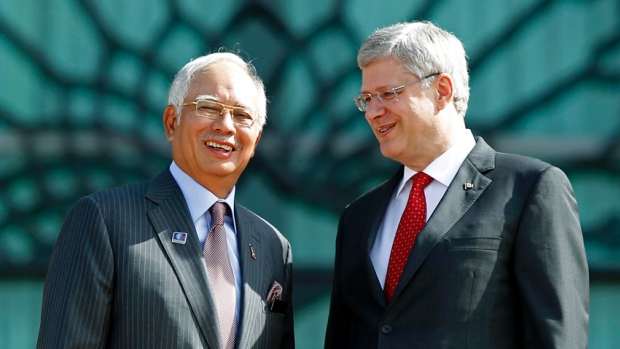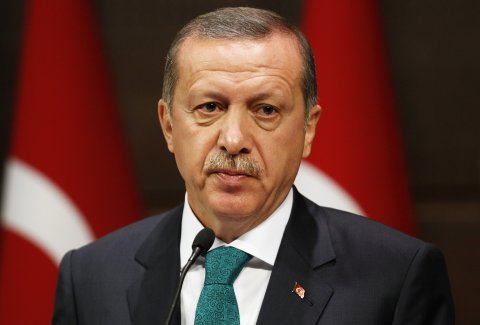With US growth in oil production and the possible re-emergence of the Middle East as the oil powerhouse in the coming decade, there is a strong need for Canada to rely less on the US and seek other opportunities abroad. There is a strong ability for Canada to assist the world’s emerging economies, particularly those in Asia, to meet their voracious and growing energy demands. This will be done in tandem while slowly moving away from such a heavy reliance on the US.
Asian Supply and Demand
Asian emerging economies are key contributors to the escalation of world energy demand. Many, including high rates of growth in economic activity, population – particularly in the middle class – and urbanization over the next two decades. As a whole, the International Energy Agency predicts that Southeast Asia will require almost $1.7 trillion of investment in energy infrastructure over the next two decades to cope with a sharp surge in demand.
In light of Asian prosperity and growth, Canada has begun to hum the melody by developing a renewed interest in relations and trade with the continent, the world’s most dynamic trading zone, calling it a top priority only three years ago. There is a lot of progress to be made in this regard, as at the moment Canada represents a mere 0.9% of total imports to Asia.
Recently, Prime Minister Stephen Harper wrapped up a two-day summit of Asia-Pacific leaders in Bali and a week-long Southeast Asia trade mission. The Prime Minister engaged in a number of incremental agreements, all designed to enable greater Canadian commerce in the emerging Pacific Rim economies. However, Chinese Prime Minister Xi Jinping’s visit to Bali, which coincided with that of Harper’s, greatly overshadowed the Canadian presence. This underlines the immense challenge the country faces in getting Asia’s attention.
This challenge has been echoed by analysts familiar with the history of Canada-Asia economic interaction. Tang Siew Mun, director of Foreign Policy and Strategy at Malaysia’s Institute of Strategic and International Studies recently stated that “Canada’s official policy is that Asia is a core interest. But when it comes to action and concrete programs to engage, it is lacking. It only talks”. He went on to state that “for Malaysia and most of Southeast Asia, Canada is absent from our minds. It is not on our radar. The elephants in the room are China and the US. It is not intentional, but this is how it is.”
Canadian diplomats have been crisscrossing the continent, working to seize the big trade opportunities among ASEAN countries. This has seen some success, with Malaysia’s Petronas announcing it would spend $35 billion to develop shale gas assets in Canada and build a liquefied natural gas (LNG) export terminal linking the country to Asian markets.
To continue the momentum in the region, Natural Resources Minister Joe Oliver was in China and South Korea in early October to promote investment in Canadian oil and gas firms.
Canada’s heightened interest in the East is benefiting the country as Giant Asian energy consumers are slowly starting to line up for Canada’s energy resources, understanding that Canadian energy exports could significantly lower prices for both natural gas and oil.
In late September, Japan’s Prime Minister Shinzo Abe met with the Prime Minister to discuss the potential for shipping LNG across the Pacific Ocean to Japan.
Foreign Investment in Canada
In terms of direct investment by Asian companies in Canada’s energy sector, China is clearly in the lead, having already made significant investments in the Oil Sands. PetroChina bought a 60% stake in the Athabasca Oil Sands Corp. China National Offshore Oil Corp. also finalized its takeover of Canadian oil and gas firm Nexen Inc. for $15 billion earlier this year. Sinopec, China’s No. 2 oil company, has spent nearly $7 billion in acquisitions in Canada. Even the smaller Chinese energy conglomerate Shaanxi Yanchang Petroleum is buying into Canadian assets.
Another BRIC country, India, is also making investments in Canadian energy. Indian High Commissioner Nirmal Verma, in Ottawa earlier this year, signed a nuclear cooperation agreement, allowing uranium from Canada to be sold to India for reactor fuel. The country is seeking to triple electricity production in the next decade, in part by bringing a dozen new reactors on line with the help of Canadian uranium.
Despite the opportunities from Asia that exist, the transportation of energy to new markets abroad remains a significant challenge for Canada. According to a new Canadian Chamber of Commerce report, the Canadian economy is leaving as much as “$50 million a day on the table” because of a significant lack of infrastructure to transport energy to both coasts. One project to do so is the Enbridge Northern Gateway pipeline which stretches from the oil sands to the coast of British Columbia. Although crucial for Canada’s efforts in reaching out to Asia, this pipeline project continues to be vehemently opposed by environmentalists and some First Nations groups, among others.
There is considerable urgency in forging Canada-Asia energy trade, and the starting point should be both increased investment in Canada’s energy infrastructure, as well as greater and more strategic Canadian diplomatic engagements with Eastern markets and consumers. As of now, Canada lacks a strategic framework for an energy relationship with Asia that is based on national interest, rather a collection of private interests. A much-needed framework of this nature would be well able to situate the energy relationship within the broader context of Canada-Asia relations and Canada’s national interest.





